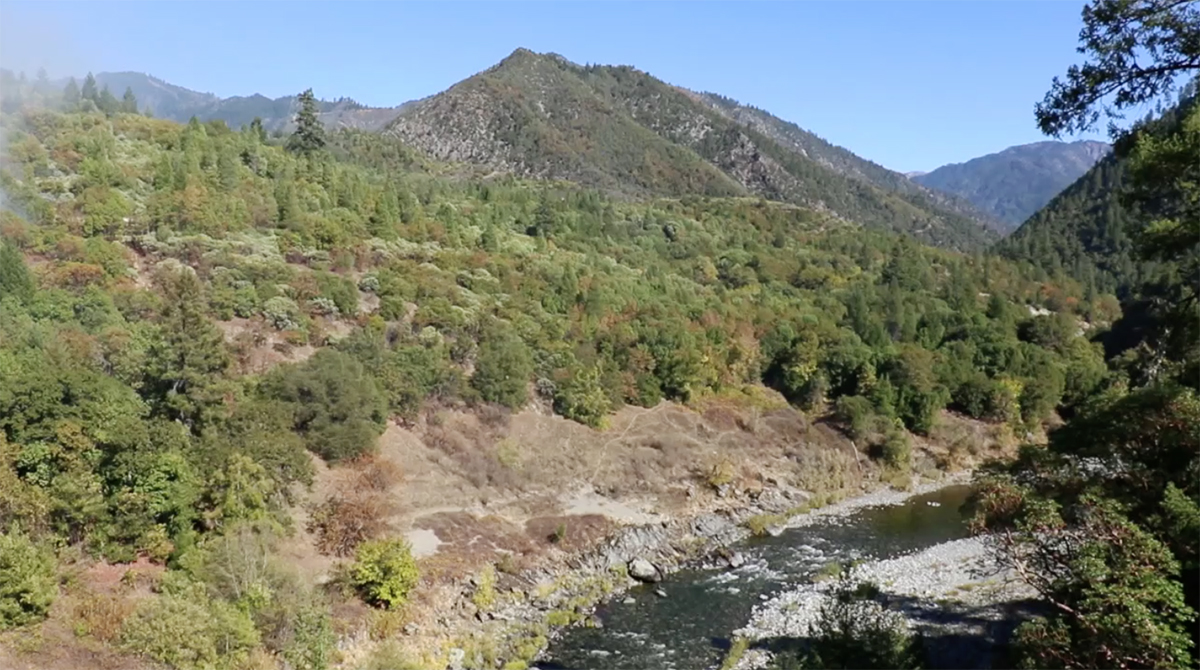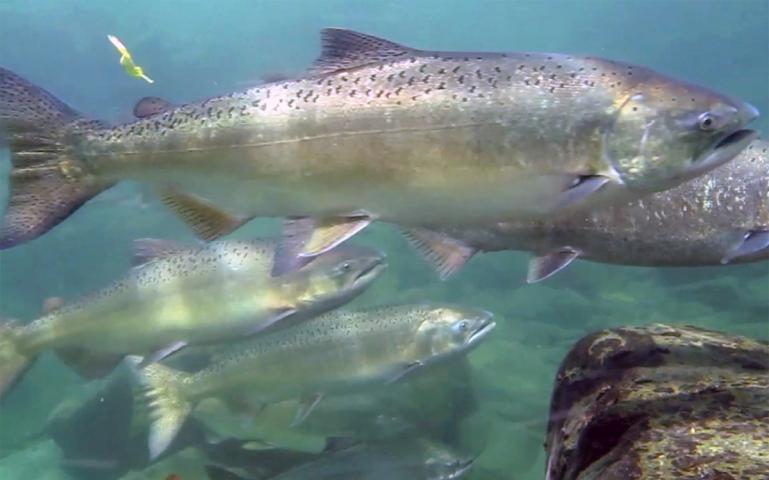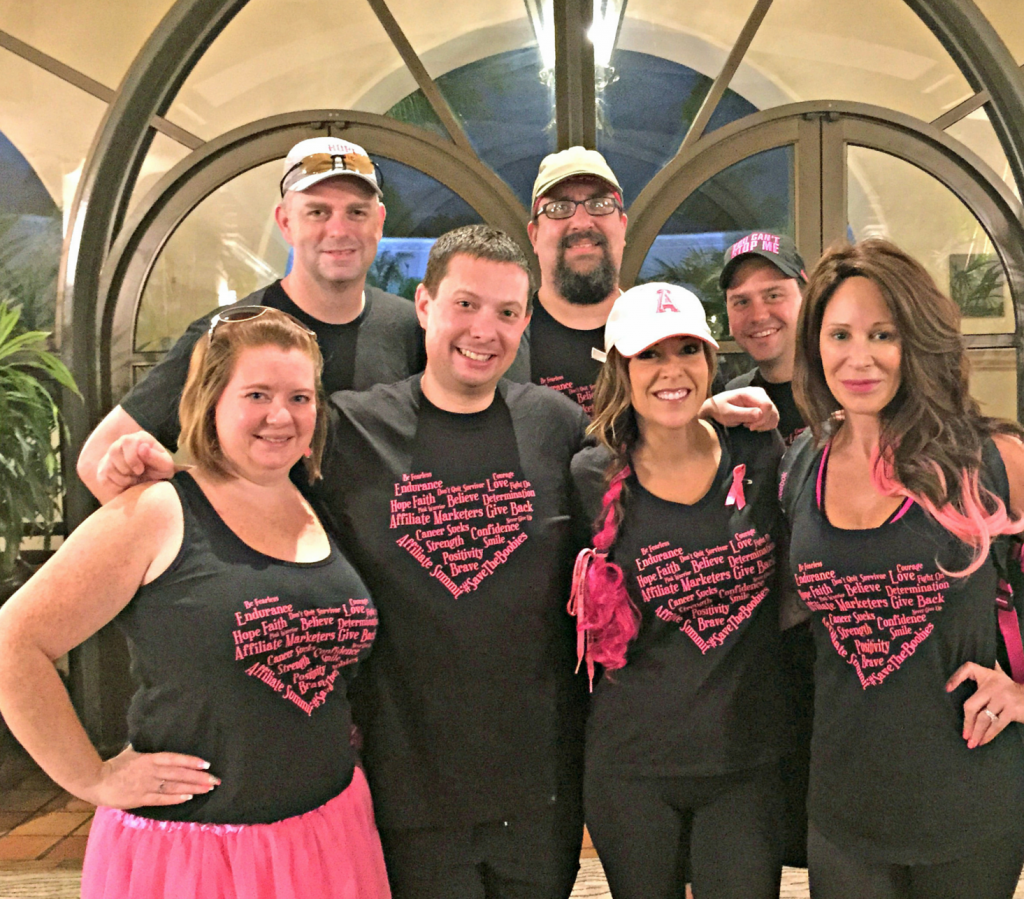
When the Klamath dams come out the Spring Chinook will thrive. If they can last that long.
To get to the largest surviving population of wild Spring Chinook salmon on the Klamath River, I drive farther north than I’ve ever been in California, then turn right. Gradually, the highways disappear, and the roads narrow. Commerce becomes more improvisational. Grocery stores and restaurants disappear and in their place there is a farm stand staffed by Gandalf in overalls and a naked baby cooing to itself and scooting along on a tricycle. The roads become more improvisational too, and begin to curve and twist until they nearly double back on themselves, until my rental car is trundling along a single lane of dirt and gravel carved into the edge of a cliff. It becomes clear to me that if I meet another car going in the opposite direction that one of us is going to die, probably me. But when I do round a corner and see another car it does a set of maneuvers that seem to bend space-time, and somehow we pass by each other smoothly, and continue on our way.
My destination is a one-room schoolhouse in Forks of Salmon, CA, a place where the closest thing to a town square is a tree that you sit under to drink beer. During the day, a gang of horses roams parking lots and lawns, looking for dumpsters or unattended coolers to break into.
Inside the schoolhouse, the Forest Service and the Salmon River Restoration Council, a local nonprofit, are checking out swim gear to the 90 or so people who have arrived for the annual Spring Chinook salmon count. Tomorrow, we are going to swim down 75 miles of the Salmon River, counting every Spring Chinook salmon we run across.

Big changes are coming to the Klamath, which was once Manhattan, for salmon. Local kids from the Yurok and Karuk tribes grow up on stories about how during the old Spring and Fall Chinook runs the water was so thick with fish that you could practically walk across them. In 2020, demolition will begin on four major dams—Iron Gate, John C. Boyle and Copco 1 and 2. It will open up 300 miles of salmon habitat that has been closed off for nearly a hundred years—the largest river restoration project in U.S. History.
The Spring Chinook is the first fish to return from the ocean as the winter comes to an end. It’s hard to overstate its importance to the tribes who live on the Klamath, as a religious symbol, and as a literal means of survival. As time goes on it may prove even more critical, because it may prove more resistant to the effects of climate change than the Fall Chinook because it travels early in the year, when water levels are high and cold. But the Spring Chinook became extinct in many tributaries of the Klamath decades ago: a casualty of dams, agricultural runoff, and water being diverted to farms and orchards as far away as California’s Central Valley. Remove the dams, and it’s possible that the Chinook on the Salmon River could repopulate their former territory.
The Spring Chinook persists on the Salmon because even though gold mining and logging did a number on the local ecology, the river was never dammed or diverted. Its headwaters come out of Marble Mountain wilderness, and the tributary itself is surrounded by forest service land. This is one of the reasons we’re even able to count the salmon in the first place: private landowners often restrict river access, out of fear that letting people collect data will lead to more restrictions in the future.

Because the Salmon river is cold, fast, and full of rocks, our goal is to cover as much of our bodies with neoprene as possible. I successfully check out a snorkel, a wetsuit, a sun-faded jacket with a hole in the elbow, neoprene gloves, two funky-smelling neoprene socks with holes in the heels, and shoes that look like regular hiking boots, but which turn out to be underwater hiking boots.
The only thing I’m missing is a cowl, which looks like a neoprene ski mask. There is only one cowl left. It has “Small” written on the side of it in magic marker, and it looks like it would be appropriate for a toddler.
“Do you have any more cowls?” I ask. “My head is really big.” I point to my head, for reference.
The woman supervising the bins looks at me speculatively. “Why don’t you just try it?”
I pull the cowl gently over my head. Then less gently. Then violently. Improbably, it slides into place and breathing suddenly becomes difficult. I claw at my face and dance backwards, like a dog trying to back out of a veterinary cone.
I’m not sure how I get myself out of the cowl but when I do, I am relieved to see that all humans in this room are struggling with their wetsuits in their own special way. Everyone is working out their own technique. Some people hop up and down and yank. Some contort. The overall result, played out across the room, is that of a very energetic modern dance performance.
Any salmon who make it to the Salmon River to spawn will find perfect conditions to reproduce – but that’s if they make it. It’s July 2017, the first summer after the worst drought in California’s recorded history. Last year, the Chinook count was around 398 – a fraction of what it had been before the drought, and half the average run over the last 20 years. During the worst of the drought years, the farmers of California’s Central Valley filed court injunctions to block releasing water from dams that was meant to lower water temperatures and save wild salmon. Both the Karuk and the Yurok voluntarily reduced their subsistence and ceremonial fishing this year, in the hopes that the Spring Chinook will recover.
The salmon counters who have come here cut…





